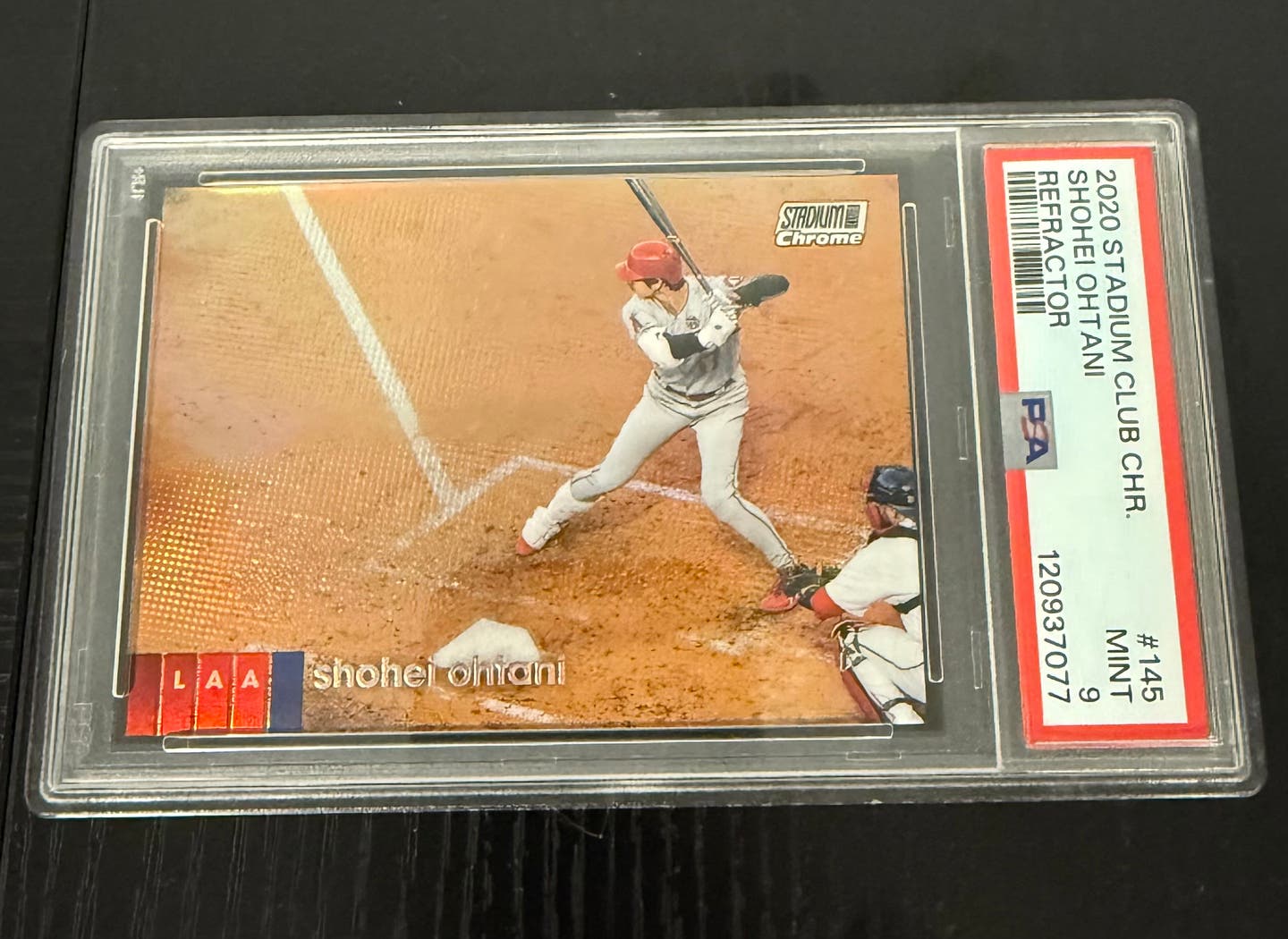Features
25 Years Later, Hobby Still Sees Impact From Upper Deck’s Debut
By Greg Bates
For baseball card collectors and the sports card hobby in general, 1989 was a special year.
The diehard and casual buyer was used to picking up Topps, Donruss, Fleer and Score year after year, but something new was about to hit the market. It was going to take the industry by storm.
Upper Deck released its inaugural product at the end of February, and it was like nothing the card world had ever seen.
“It was the spark that lit the industry,” said Nick Redwine, who owns Nick’s Sports Cards in Dallas.
Even though it’s been 25 years since Upper Deck’s revolutionary splash into the business, dealers and collectors can still remember the phenomenon like it was yesterday.
“It sort of took the long-standing collectors and the young collectors and gave them a product to collect together,” said Jeffrey Silverman, who is a member of Upper Deck’s Diamond Club, which consists of the top individual purchasers and collectors of Upper Deck and Fleer products. “I don’t think I recall prior to that those two worlds colliding. I think that product really did bridge that collecting generation that was pretty divergent at the time.”
It was Upper Deck’s vision and goal to provide the card collectors with something new and extraordinary. Mission accomplished.
“If you look at it, it really set off a phenomenon for the industry,” current Upper Deck President Jason Masherah said. “People had never seen a really nice trading card product that was really treated as a collectible first and foremost and less of kind of a passing hobby. That really set people up to look at the industry as a collectible and something that’s really nice and elegant and something that you want to display, something you want to protect.
“The Upper Deck pack wasn’t made of wax or plastic, it was foil as a means of tamper-proofing the product. There wasn’t a stick of gum inside, just 15 high-quality cards. The cards were flashy, innovative with unique photography and featured a hologram on the back to protect the consumer from counterfeiting. A sharp white border with the first base line running up the right side of each card made them instantly recognizable.”
Upper Deck’s rise to stardom put the pressure on the other card companies, Topps, Donruss and Score – Fleer is part of the same company as Upper Deck – to up their products.
“If you look at the evolution of the products and you look at what the competitors were putting out in 1988 vs. what they were putting out just a couple years later based on the innovations that Upper Deck created, it’s night and day,” said Masherah, who has worked at Upper Deck since 2006.
Upper Deck was a culture shock to kids who were used to purchasing a number of packs of cards by using only a couple dollars from their allowance.
Topps, Donruss, Fleer and Score were selling individual packs for about 35-40 cents. When Upper Deck was first released, packs could be found at a local drug stores for 99 cents on the lower end and upward of $2-$2.50 in some card shops nationwide.
“That was your first high-end product in the sense that Upper Deck had the vision to produce a card that was twice as expensive as the other cards on the market,” said Scott Allen, owner of South Bay Baseball Cards in Lomita, Calif. “They set the bar for cards and continue to reset the bar.”
According to Masherah, Upper Deck wasn’t concerned the high price would deter collectors. The Upper Deck brass was confident kids wanted a good product and the best cards.
Redwine opened his store in July 1989 and recalls putting out Upper Deck packs for the first time.
“We were saying, ‘Wow. Look at the price on this stuff,’ ” Redwine said. “It might as well have been $1,000 a box.”
The new style of cards was something that collectors were really drawn to. The 1989 Upper Deck packs, boxes and factory sets jumped off card shop shelves. The Upper Deck Co. had hit the ground running with a unique brand message and positioning tactics.
“From a historical standpoint, it’s got to be in the top two or three hobby events that have sort of paved the way in the history of card collecting,” said Silverman, who lives in Bloomfield Hills, Mich.
Upper Deck was influential in the baseball card boom of the early to mid-1990s.
‘The Kid’ shines for Upper Deck
When Upper Deck was designing its premiere set, the company had the vision to have the first 26 cards be the top prospects – designed with a “Star Rookies” logo – in baseball. Gary Sheffield, Sandy Alomar Jr. and Gregg Jefferies were coming up through the minor leagues and making names for themselves. However, it was the No. 1 pick of the 1987 MLB draft who was chosen as card No. 1 for the inaugural set.
Ken Griffey Jr., “The Kid,” was labeled a can’t-miss prospect. The 19-year-old Seattle Mariners outfielder had his card turn into the “Holy Grail” of the collecting universe.
“The Ken Griffey Jr. rookie card really is the iconic card of what we call the modern era,” Masherah said. “For a Hall of Famer of Griffey’s caliber, to be card No. 1 in the premiere set from Upper Deck is just kind of that perfect storm of all the right things coming together at the right time. We’ll be linked to that card and to Ken and his career.”
The Griffey rookie hit a feverous pitch soon after Upper Deck released the set, and every person opening a pack of the product was hoping to pull the card.
“My first recollection was really watching groups of people just opening packs sort of in a fury, looking for the Griffey card,” Silverman said. “Up until that time I don’t think people really collected that way. The hobby was about finishing sets, and the ’89 set kind of turned people into hoarders and player collectors.”
The Griffey card to this day remains one of the top traded cards of all time, Masherah noted. The Upper Deck president said as far as importance to the industry, the Griffey rookie is the No. 1 baseball card in all of collecting. That’s saying something considering the value and rarity of the 1909 T206 Honus Wagner and the 1952 Topps Mickey Mantle.
“For modern-day cards, Griffey was pretty much it – for the time period,” Redwine said. “He was the card you wanted to own.”
Both Allen and Redwine make sure they have a Griffey rookie in their display cases at all times in their shops. Redwine figures he sells about one Griffey card per month. The rookie card goes for about $40 at his store, while Allen gets about $20-$30 at his shop. That’s a far cry from the price it was going for back in 1989 and the early ’90s.
“That card will always be as collectible as it once was because you still have people that say, ‘You know, my mom threw out my cards and I had my Griffey rookie card, I’d like to replace it,’ ” Masherah said. “It’s one of those cards that everybody aspires to have just to have it. It brings back a lot of those memories of the time spent as kids collecting and digging through those boxes and looking for that last card we needed.”
Now it’s the next generation’s turn to buy the most coveted card of the previous generation.
“That Griffey card is probably symbolic of us collectors that are still in the hobby that now have kids who are turning to collecting,” Allen said. “If you��re going to start your kid’s collection and you were to buy them one of the great rookie cards of the ’80s and ’90s, you would be talking about going in and buying a Ken Griffey Jr. rookie card.”
The 1989 Upper Deck complete 800-card set as a whole has lost a bit of its luster over the years. When the product was first released, the factory set sold for around $40-$50, but cracked the couple hundred dollar range during its high point. Today, Allen and Redwine both have the factory sets at their stores going for about $50.
Allen also has packs of the ’89 Upper Deck product on his shelf and sells them for about $2.50 each. But there is still that appeal from buyers to pull a Griffey rookie and relive the heyday of collecting.
“I don’t have any in the shop, but I could take ’89 Upper Deck packs and put them out and sell them all day long,” Redwine said. “I can’t do that with ’89 Topps. I can’t do that with ’89 Fleer. It’s pretty amazing.”
Greg Bates is a freelance contributor to SCD. He can be reached at gregabates@gmail.com.








